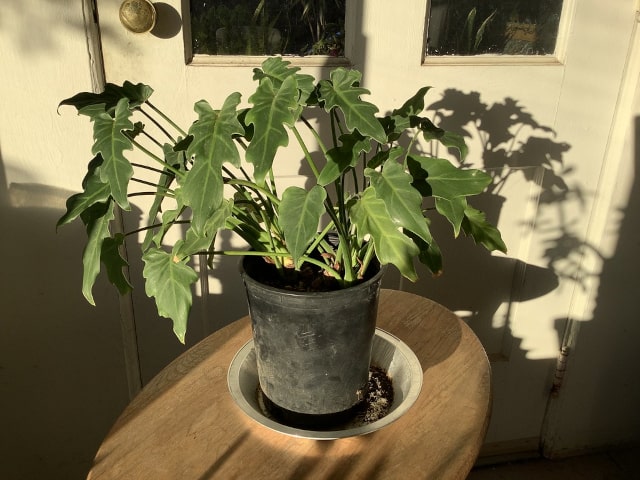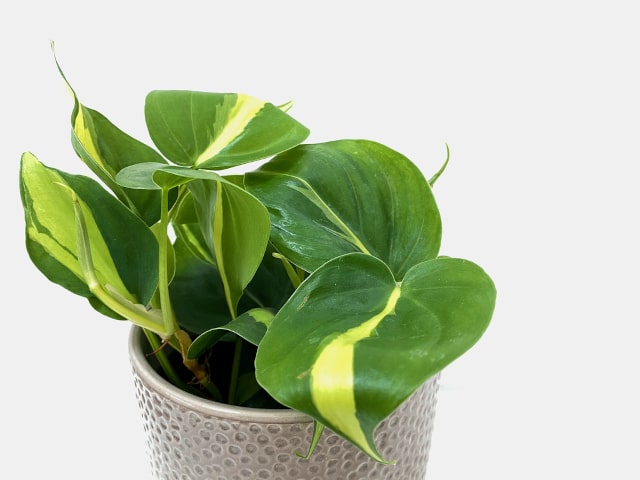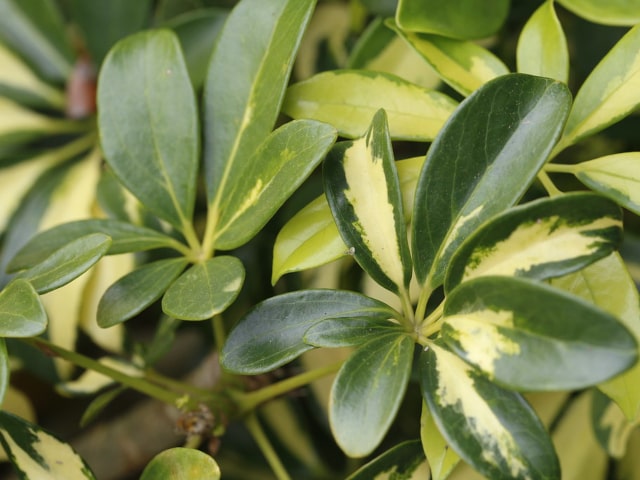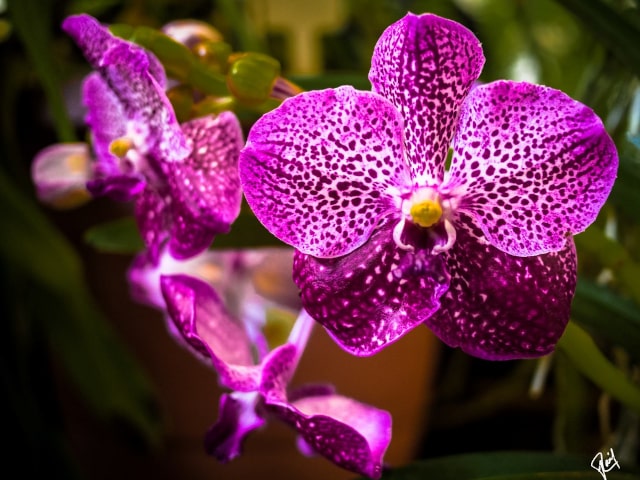
The Philodendron is a popular, low-maintenance plant that is great for many different indoor environments. It makes a great office plant because it doesn't require much care, but it can also make a great addition to your home. It is decorative and looks great in any room, so it is not surprising that many people choose to grow Philodendron in their homes.
Basic Philodendron Plant Facts
Philodendron belongs to the plant family of Arads (Araceae). It is native to rainforests of South America. Philodendrons comes in many different subspecies and varieties that have distinctive look, so there are numerous choices for growing Philodendrons in your home.
This is an evergreen herbaceous plant that can grow up to 19 feet (6 meters) in height in its natural environment. However, as an indoors plant, it typically grows up to 10 feet (3 meters) in height. This plant is known for its long aerial roots and big, dark-green leaves with gashes. This is a creeping plant so you should always provide it with climbing help in the container.
Philodendrons are typically grown as decorative plants indoors. To grow this plant, it is important to choose a place where it will have enough room to grow. Remember, these plants can grow big. This is why they look great in large offices and bigger rooms in the home.
A great thing about this plant is that it can serve as an air corrector. Philodendrons clean numerous pollutants from the room air so you can see them as a real bio-filter for your home or office. The pollutants are grabbed by the big leaves and the aerial roots. They absorb the moisture and release clean oxygen into the room. Keep in mind to never clean the leaves with sine solution or else they might stop cleaning the air.
It is important not to confuse Philodendron with a similar plant, Monstera. The Monstera is a completely different species, although it also belongs to the Aroid family. It only resembles certain varieties of Philodendron, so keep this in mind when choosing a plant for your home.
There are around 700 types and varieties of this plant. However, only some are commonly used as houseplants. The most striking and gorgeous Philodendron varieties include:
- Philodendron laciniatum. This is a beautiful variety with shiny leaves. It is a slow grower that can grow up to 5 feet (1.5 meters) in height. It is ideal for those who like Philodendron plants but don't have too much room.
- Philodendron bipennifolium. This is a fast-growing, strong variety. It has gorgeous green leaves that are large and grow even longer with age. This plant can reach the height of 6 feet (2 meters) in a very short time.
- Philodendron erubescens. This attractive variety is known for its large green leaves with a bronze underside. It also has red stalks. It can grow up to 6 feet (2 meters) in height.
- Philodendron imbe. This is a quick grower that can reach the height of 8 feet (2.5 meters). It has stalks on the underside of its leaves.
- Philodendron bipinnatifidum. This is not a creeping variety. It has leaves in a strong green color that start heart-shaped and turn feathery after a while.
How to Care for Philodendron Plants
Here are basic things that you need to provide to your Philodendron plant to make it thrive inside of your home or office:
Space
The first thing you need to consider is the space. Philodendron plants can reach the height of 8-9 feet (2.5-3 meters), so they need room. The height and growing quickly can be a sign of good care, so it is a positive thing. However, it means that you need to choose a spot with enough room for your Philodendron to grow.
Another thing to consider is that this is a creeping plant, so you need to let it climb. Using moss sticks of barked branches is a good way to help your Philodendron creep and climb.
Soil
Philodendron plants like lightweight, nutritious and permeable soil. It is important that the soil doesn't condense nor dries out too quickly. Sadly, most of the affordable types of commercial garden soil will dry out quickly, so it is always best to invest a bit more money into a high-quality soil. It is even better to enrich this soil with some compost or rotten leaves. Another option is to use coconut fibers and flower soil as enrichment.
A good way to go is to line the lowest layer of soil with some potsherds and expanded clay. These will support the water drain and will store moisture. It will benefit the roots and will make Philodendron thrive.
Keep in mind that the ideal conditions for your Philodendron are those that mimic its natural environment: nutritious, humic ground. It should be well-permeable and fresh. Alternatively, it is possible to grow your Philodendron in a hydroponics, if you prefer this method.
Temperatures and Resting Period
Philodendron plants can thrive in room temperatures all year long. Make sure that temperatures never drop under 58 degrees F (14 degrees Celsius). Remember that the plant will enter a period of hibernation during the winter. This is a resting period, and the plant will not grow as fast during this time.
Light
Keep in mind that Philodendron is a tropical plant. It typically grows half-shaded in the rainforest and doesn't like direct sun. It is best to provide it with similar lighting conditions. It shouldn't be exposed to direct sun, but it still has to have enough light to reach even the lower regions of the plant.
Water
Ideal watering regime for a Philodendron is moist soil without too much water. Make sure to never let your Philodendron dry out.
Philodendron plants prefer lukewarm water. Stagnant rainwater is ideal for this plant. Simply fill a watering can and let it stand for a few days. Make sure that the water your provide is room-tempered. It should never be cold or directly from the faucet.
This plant also likes to have its leaves sprayed. You can spray the leaves every other day during the summer months. During colder months, you can spray every 3 or 4 days.
During the winter, the plant is in a resting period so you should water it less.
Fertilizer
Philodendron plants should be fertilized every other week in the period between spring and the fall. It prefers liquid fertilizer. During other parts of the year the plant is in the resting period, so it should be fertilized only once per month, maximum. You should also water it less during this time.
Repotting
Many times, Philodendron plants bought in stores come with a matching pot. However, this pot will become small after a while, so keep this in mind. It is important to repot your Philodendron once it outgrows its container. You will know it is time when you see roots starting to grow out of the pot (ideally, you should repot a bit before this happens).
To repot, choose a slightly bigger container. The best time to repot is early in the summer. Take the plant carefully out of its container and brush off the old soil. You can also use this time to cut off any old roots present.
After this, place the plant into a new container with a drainage layer and soil. Press it until it's firm. Water the plant and put it in a bright location. Don't fertilize it in the first two weeks. You can resume usual care after this time.
Cutting and Pruning
Sometimes, a Philodendron can grow more than what you like. You are free to cut it and prune it. It can take a lot of pruning: it can be cut back without much problem. Ideally, cutting should be done between spring and late summer. You can shorten any shoots that are too long with a sharp knife or using garden shears.
However, keep in mind not to cut aerial roots. Aerial roots should never be removed. If you don't like their appearance, simply put them into the earth.
Propagating Philodendron
Propagation is a great way to get more Philodendron plants for your home. Perhaps the easiest way to propagate Philodendron plants is by using top cuttings. This should be done during the summer. Simply cut off a few cuttings under the leaf node. Make sure to remove all of the leaves and put cuttings in a mixture of sand and compost or turf. Since cuttings can be big, each should be planted into its own pot.
Make sure to water the soil thoroughly and seal the pot with a plastic bag after this. Place the container in a room temperature and in a place with bright light (but not too sunny). Air the cuttings every 2 to 3 days. This should prevent mold from forming.
It should take about 3 to 4 weeks for cuttings to take root. Don't remove the plastic bag before that. If propagation was successful, the cuttings should be green and growing slowly. Keep them in open air (no bag) and fertilize every four weeks. However, make sure not to over-fertilize small plants need only a bit of fertilizer. Too much of it can damage delicate plants.
The other method of propagation is directly from seeds. It is possible to collect Philodendron seeds during the blooming time, but it is not easy. Keep in mind that the seeds are tiny, and collection requires a precise hand. If you manage to collect them, you can plant them in good flower soil - no need to soak them first. Alternatively, you can use breeding soil that has an optimal ratio of nutrients ideal for seeding.
When planting, put the seeds about quarter to 1/2 inch in depth. Cover them lightly. Place them in a warm and bright spot. The ideal temperatures for germination are around 68 to 73 F (20 to 23 degrees Celsius). The seeds need about 2 to 6 weeks to germinate. Make sure to spray the soil to keep it moist but not too wet.
Once the seedlings develop, transplant them to a small pot. Make sure to use nutritious breeding soil because it will encourage root growth. Strong roots mean strong plant, so this is the best start you can provide to your new Philodendron plants.
Diseases and Pests
Philodendron doesn't have any common diseases. However, it can suffer from pests. The most common pests attacking Philodendron plants include:
- Spider Mites. You can find those around leaf borders and on the axils. Spray leaves with water to reveal spider mites. Neutral soap and soapsut with bile soap are ideal insecticides. You should wipe leaves with soft cloth.
- Mealybugs. These will look as small, white cotton balls on the leaves. They can be removed in the same way as spider mites.
- Thrips. These are dangerous because they can kill the plant. Luckily, the infections are not common, but they cause the plant to suddenly lose its vitality. The infested leaves can fall off. Monitor your plant closely to notice any presence of thrips. Try with a soapsud, but it this doesn't work, seek remedy from a specialized garden shop.
- Scales. Scale insects have green bodies with a strong, slightly rounded carapace. They are often difficult to spot because of the color.
Photo credit: el cajon yacht club




0 Comments